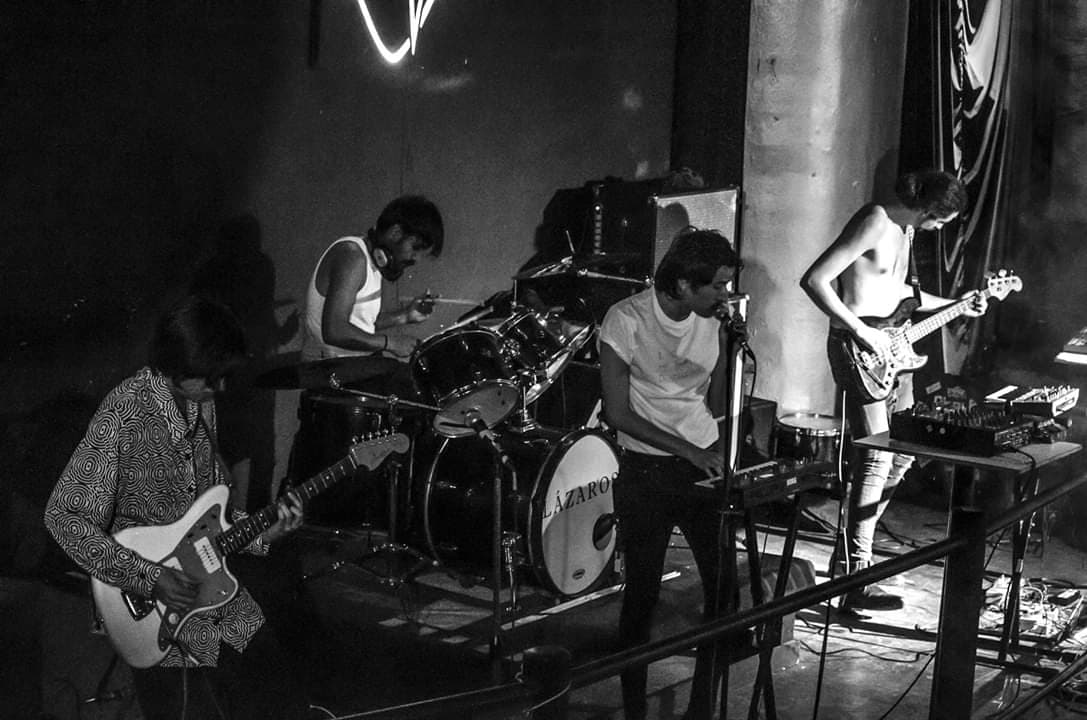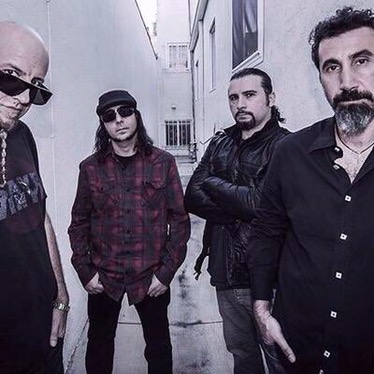As a Mexican living abroad, I’m often asked for recommendations of Mexican metal music, so I thought it would be a good idea to put down a list of my favourite Mexican metal albums. Although for some normally names like Cenotaph, Disgorge and Majestic Downfall at least ring a bell, it is Brujería who first come up in a Mexican metal conversation. Nevertheless, as Mexican goregrind legends Disgorge argued in an interview for the Very Metal magazine circa 2004, Brujería depict a misleading reality of our country, not everything in Mexico are cactuses and drugs. Indeed, I wouldn’t even consider Brujería a Mexican band. Not only is the band based in the USA, but also all their members are British, American or Mexican-American, although this has never been confirmed as the real identities of their ever-changing line-up have never been disclosed. But I digress. The following 17 albums are my recommendations for any metalhead without specific taste. However, I’m not including any albums from the rich progressive metal and power metal scenes in Mexico as I am fairly unfamiliar with these two genres in particular.
.
A PERPETUAL DYING MIRROR – Towards a Constellation View (2002)
Sempiternal Productions – Irapuato, Guanajuato

I’m not homesick when I gush so badly about A Perpetual Dying Mirror’s only full-length album, Towards a Constellation View, released in 2002. This is not your average My Dying Bride-worshiping death/doom metal band. Even digging deeply into the underground of the genre, hardly can one find a band with a style of the likes of A Perpetual Dying Mirror. Featuring members of the 90s metal bands Supplicium and Agony Lords, the brainstorming from both bands turns out into a rather fertile sound in this album. Unable to choose between the singers of both bands, A Perpetual Dying Mirror alternate Supplicium’s deep growls and Agony Lord’s raspy vocals which are, in a broad sense, in the style of early Lake of Tears. The ever-present interaction between vocals create a dramatic, even poetic sound helped by the intense use of keyboards. Amassing the members’ experience in the genre, the guitar work is far from trivial which definitely stands out in doom metal in general. The whole atmosphere depicts a nocturnal sky full of stars, turning out into a mysterious and dramatic experience. The production is a bit rough around the edges, specially in the mix. Unfortunately, Towards a Constellation View remains their only studio material as the band split up in 2006.
.
ALFA ERIDANO AKHERNAR – Aztec War Metal (2014)
Concreto – Xalapa, Veracruz

The brightest and southernmost star in the Eridanus constellation is called Achernar and it’s designated as Alpha Eridani. Although Xalapa-based quintet Alfa Eridano Akhernar may not really play epic astral metal in the vein of Arcturus’ debut Aspera Hiems Symfonia (1996), some musical tides can be drawn. Nevertheless, as the title of Alfa Eridano Akhernar’s fourth full-length album suggests, the band borrows inspiration from the ancient Aztec Empire, although more lyric-wise than instrumentally. In spite of the fact that a handful of Mesoamerica-inspired metal bands in Mexico incorporate pre-Hispanic instruments to a black metal base, Alfa Eridano Akhernar work a more traditional black/death metal sound with mild keyboards. The band’s view as to what “Aztec war metal” should sound like in this album is an outraged and fast death metal with black metal melodies and vibe, and tremolo picking sections alternated with more death-metallic riffs. Keyboards do not amount to a folk atmosphere, they rather sound sort of epic, bringing the mentioned Arcturus album in mind. Alfa Eridano Akhernar deliver these elements with a skillful performance, which the band seems to have improved in this, their last album.
.
AGONY LORDS – The Sun of the Cursed (1997)
Oz Productions – Irapuato, Guanajuato
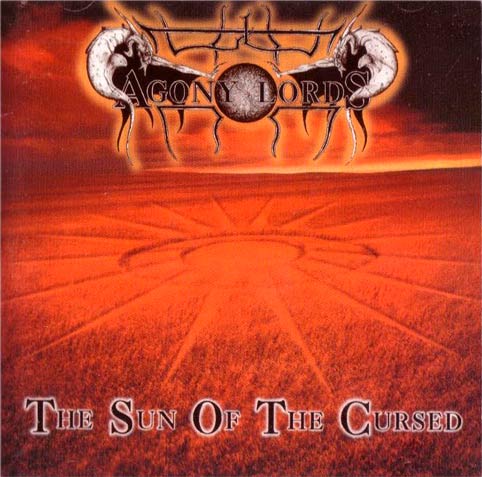
Agony Lords are widely respected in the metal scene in Mexico. This is no surprise, not only has the Irapuato-based outfit been around since the late 80s, but they have also crafted their own brand of metal achieving quite a distinctive sound. I’ve always been baffled as to why the band is commonly wrapped as a death metal one. Formed from the debris of Ripping Flesh, not even in their pre-Agony Lords stage did the band deliver a fast blast-beat-obsessed sound. Instead, Agony Lord’s brand of metal could more objectively be defined as a heavy metal base endowed with harsh vocals and a few death metal features, e.g. scarce double bass drums. The voice of singer Jesús Bravo is one of my favourite ones in the Mexican scene. Seldom can one guess whether he’s singing or screaming, a confusion that happens while listening to people like Darkane’s former vocalist Andreas Sydow. However, due to his dramatic performance, I would rather compare Jesús Bravo with an early Daniel Brennare from the vanished gothic metal legend Lake of Tears. Guitar-wise the band delivers a bit heavier sound than the standard heavy metal riffing, influence of Katatonia/Paradise Lost constant soloing is found in their guitars as are some progressive metal hints. In this list I bring up Agony Lord’s first LP, 1997’s The Sun of the Cursed, just because it’s my personal favourite, however all of their albums are worth checking out. Taking advantage of the chaos and confusion of this 2020, Agony Lords just dropped their fourth LP, which sounds (so far) flawless at the first spins.
.
ANABANTHA – Letanías, Capítulo Prohibido (2005)
Discos Misha – Mexico City
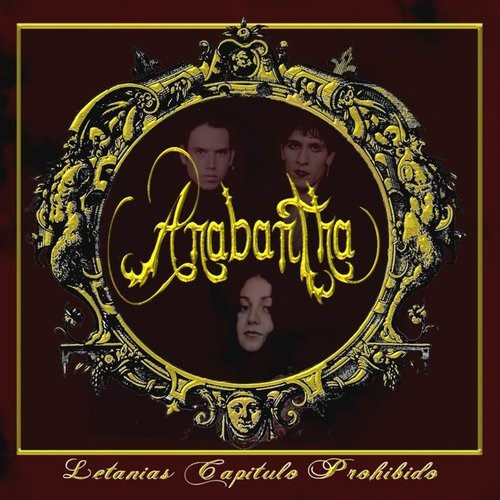
Believe it or not, Mexico, a country of hot weather and a colourful culture, is very likely the world’s biggest gothic metal market. Statistics on Spotify reveal that Mexico City is the place where people listen to major gothic metal bands the most, including Tristania, Theatre of Tragedy, Therion, After Forever and even Cradle of Filth. And not to mention Lacrimosa, whose name is strikingly obscure in their homeland Germany and in Europe in general, whilst they almost enjoyed mainstream success in our country. Why is this? Not even the scholars dare to answer. Maybe Mexican label Scarecrow who made this European CDs available in the country at a cheap price are responsible. Tricky one though. As Mexicans in our teens at the beginning of the 00s, we witnessed a huge gothic metal trend, in which the rise of a national representative with lyrics completely in Spanish was not a surprise. Hailing from Mexico City, Anabantha may not be the only gothic metal band that came out in Mexico at the time, people can also think of Elfonía, former band of Marcela Bovio from Stream of Passion and Ayreon fame. However, I would put Elfonía in a progressive rock tier rather than in a gothic one. Anabatha are the most recognized gothic band in the country. Letanías, Capítulo Prohibido, released to an agonizing gothic metal heyday in Mexico in 2005, is Anabantha’s sophomore effort. The album is written in a very natural way, showing the passion and melancholy required to fit in the genre. Letanías is driven by keyboards and the gorgeous voice of Duan Marie. Detaching from the effective beauty and the beast style of interaction between male and female vocals, Duan Marie shares microphone with drummer Vlad Landeros whose vocals are clean, instead of growling. It might sound a bit like a pretty standard gothic metal album, but Letanías, Capítulo Prohibido is actually a well-crafted example of the genre, and probably the finest one you can find with lyrics in Spanish.
.
CENOTAPH – The Gloomy Reflection of Our Hidden Sorrows (1992)
Horus Productions – Mexico City

Globally recognised as a masterpiece in the underground death metal scene, Cenotaph’s first effort, The Gloomy Reflection of Our Hidden Sorrows, makes this list as the most important extreme metal release in Mexico. Not only did Cenotaph pioneer death metal in Mexico in the late 80s along with other few like Shub Niggurath and Mortuary, but they also reached a legendary cult band status to an extent that their recent return to the stages has sparked excitement inside the whole Mexican metal scene and a second wave of followers harvesting. Rising during the heyday of death metal, Cenotaph’s interpretation of the genre was a rather rich and sophisticated one. This album is aggressive and chaotic as expected from the tier they belong to, but Cenotaph seemed to be quite interested in giving a more atmospheric focus to their sound. Although keyboards and other atmospheric elements had been already approved by the genre’s policies by 1992, rarely did a band incorporate them in such an effective way as Cenotaph did in their debut. An occult atmosphere can be experienced throughout the album which is also helped by raw guitar distortion, and brutal and eerie grunts from singer and bassist Daniel Corchado. Cenotaph flirts with death/doom metal even including a few spoken words. Hence, this album sounds like the earliest stages of many death/doom metal bands, for example the first demos from Evoken, My Dying Bride and Saturnus. But carving and atmosphere on a death metal monolith is not Cenotaph’s only skill, the band shows prodigy sound-writing and composition skills. All songs cleverly evolve and span for a 6-minute average.
Daniel Corchado would leave Cenotaph after their debut. He would have a short stint in Incantation and would start his own band, The Chasm. After their debut, Cenotaph would change their approach to a more melodic death metal sound. Corchado didn’t join Cenotaph’s recent reunion.
.
THE CHASM – From the Lost Years (1995)
Reborn Records – Mexico City

The Chasm are no strangers for underground death metal fans who have widely lauded the band’s peculiar music and song-writing style. Started in 1992 by Daniel Corchado as his main project after parting ways with Cenotaph, The Chasm continued his exploration through unorthodox death metal compositions and would take the band through a roll of high quality and critically acclaimed releases. Daniel Corchado would eventually move to the USA, relocating the project in Chicago. Here I bring up my favourite album of the band’s Mexican era which finished after the release of Deathcult for Eternity: The Triumph (1998). For the Lost Years was dropped in 1995 as The Chasm’s sophomore album and followers have since been at odds over it. The reason for this is that the album might qualify for the band’s most atmospheric effort in their 8-album catalogue. Whilst in their debut chunks of Cenotaph could still be tasted in the recipe, in From the Lost Years The Chasm comes up with a more melodic and melancholic sound. Downtempo sections with melodic solos and acoustic guitars flood the album in an almost doom metal fashion. Katatonia’s seminal debut Dance of December Souls (1993) comes to mind constantly. Nevertheless, The Chasm still focus on complex composition and technique, so much so that an almost progressive sound is achieved, with an immediate likeness to Darkthrone’s Soulside Journey (1991) and Openth’s Morningrise (1996), roughly speaking. The band would return to a more aggressive and faster death metal in their following albums.
.
DISGORGE – Chronic Corpora Infest (1997)
Perpetual Records – Santiago de Querétaro, Querétaro
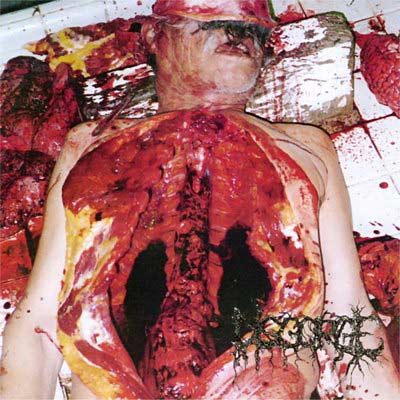
Disgorge’s debut album Chronic Corpora Infest is very likely one of the most brutal albums humanity has had the pleasure to listen to. Of course, digging into the bizarre depths of the goregrind genre one can find ridiculously brutal and extreme, sometimes even hilarious, albums. The major difference is that Chronic Corpora Infest is still a well-structured album, with a human drummer, no vocal distortion, and no tendency towards noise. Long story short, Chronic Corpora Infest is still a real metal album and a very ear-pleasing one indeed. Sometimes coined as the Mexican version of Carcass’ game-changing Reek of Putrefaction (1988), Chronic Corpora Infest is actually far of being a copy of Carcass’ debut. The terrifying sound of this album includes some of the most original vocals ever heard in metal. Antimo Buonnano sounds like if he was choking on his own blood when singing. His vocal style would since inspire many in the goregrind scene. The band also incorporated horror samplers, a gruesome welcome addition which was already exploited by bands like Mortician and Impetigo at the time. Unlike many goregrind artists, Disgorge built all this chocking atmosphere without forgetting about giving the songs a proper distinctive structure, which in turn makes Chronic Corpora Infest a no-track-skipping album. Disgorge would lean more towards a brutal death metal sound in their following releases. However, their debut is still deemed a worldwide classic in the goregrind circles. The album, along with Anarchus’ previous work, would spark a whole goregrind scene in Mexico which unfortunately is no longer alive, but you might be interested in having a listen to Oxidised Razor, Gore and Carnage, C.A.R.N.E., Cacofonia, Psicovomitosis Sadinecrootitis, Visceral Grinder, Hipermenorrea and Paracoccidioidomicosisproctitissarcomucosis
Disgorge should not be mistaken for the USA brutal death metal band of the same name, who after learning about the growing recognition of Mexico’s Disgorge, started using occasionally the moniker The True Disgorge.
.
EXENFERIS – En el Umbral de Mis Dominios (1999)
Discos y Cintas Denver – Uriangato, Guanajuato

In the USA, the 90s saw the thrash metal genre turning down its tempo leaning towards a more groove metal sound. Things were no different in Mexico with Transmetal and Leprosy following the same trend. It’s in this context that thrash metal band Exenferis released their only LP, En el Umbral de Mis Dominios (1999). Founded by former Transmetal member, Juan Carlos Camarena, Exenferis played mid-tempo thrash metal with potent and groovy riffs. However, an interesting twist is the deliberate gothic influence in the album. Keyboards, clean guitars, melodies and religious lyrics give the album a darker taste than the average groove metal album. The fact that the intense use of keyboards actually work well in this thrash metal sound is a remarkable feature of this album, as most attempts for infusing the genre in keyboard atmospheres turn into cheesy or simply ineffective results. Transmetal would also flirt with a gothic sound for a couple of albums, but in my very own opinion, Exenferis’ only record tames this unstable chemical reaction by not abusing of the scope of the keyboards which Transmetal did, i.e. En el Umbral de Mis Dominios is still a riff-led album as keyboards, although being persistent, remain a background element. Unfortunately, no further studio material was recorded. Juan Carlos Camarena is currently a guitarist in Monarca de los Malditos.
.
INFINITUM OBSCURE – Sub Atris Caelis (2009)
Deathgasm Records – Tijuana, Baja California
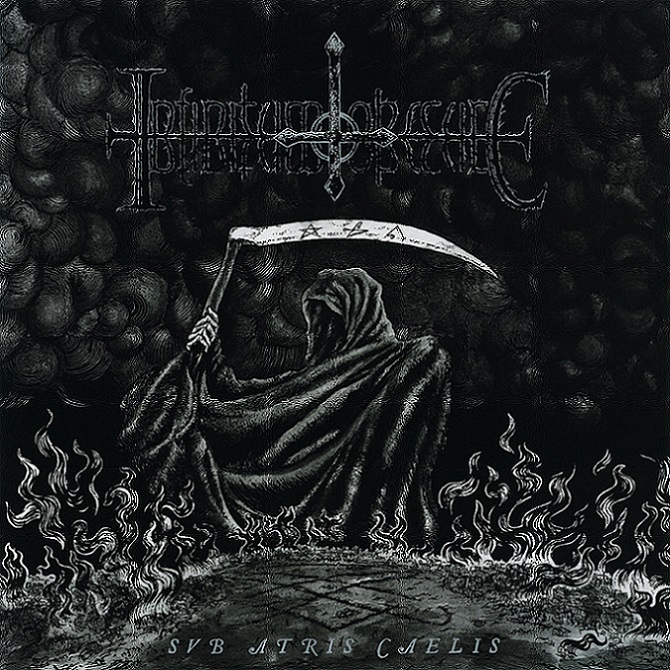
I would normally swerve albums tagged as “melodic death/black metal” as I would expect getting cheesy overproduced keyboard-driven extreme metal. Nevertheless, Infinitum Obscure’s sophomore album, Sub Atris Caelis, although in a broad sense described by such a tag, should bear a sticker on its cover warning “not your average melodic death/black metal album”. Hailing from Tijuana, the northernmost city in the country, Infinitum Obscure deliver a rather rich sound in Sub Atris Caelis, so much so that countless bands come to mind while spinning the album. From melancholic early Katatonia, to technically aggressive Mayhem’s Chimera (2004), through creative Dissection, fast and melodic At the Gates, and sophisticated yet dark Edge of Sanity’s Nothing But Death Remains (1991). Of course, such a plethora of colours in the palette require a roller-coaster of guitar riffing, and that’s exactly what the album’s key element is. The guitar work is nothing short of astonishing. Both lead and rhythm guitarist show off their skills through tremolo picking, thrashing riffs, melodies, excellent soloing and even acoustic passages, leaving a (probably involuntary) technical taste. Infinitum Obscure is currently signed by Indian label Transcending Obscurity Records whose reputation in the underground doom and death metal genres has rocketed in recent years.
.
LEPROSY – Llora Chiapas (1998)
Discos y Cintas Denver – Mexico City

In the 22nd of December 1997, an armed group murdered 45 indigenous people in the Acteal village in the state of Chiapas. Victims were supporters of the Zapatista group EZLN while gunmen were part of a right-wing paramilitary group, hence a government complicity was suspected. This sparked anger and concern at an international level. Through their music, artists of the size of Rage Against the Machine, Manu Chao and Mexico’s most commercially successful band Maná, expressed their outrage about the Acteal massacre and the Chiapas conflict. However, all this anger and disgust was better expressed by means of aggressive groove/thrash metal in Llora Chiapas (“Chiapas Cries”), Leprosy’s third release. Transmetal founding singer and guitarist, Alberto Pimentel, had parted ways with the band by 1990 and started his own thrash metal band, Leprosy. Launched during the peak of nu-metal, in 1998, Llora Chiapas is not immune to the nu-metal disease. Hence, although this is clearly still a death/thrash metal album, strong Sepultura’s Roots (1996) vibes can be heard. This album is powerful, not only in its strong message cried out through Pimentel’s angry grunts, but also musically as Leprosy delivered the heaviest and catchiest riffs they have ever recorded. In this regard, the band reached commercial success by having the videoclip for their single “Residentes Olvidados” featured on mainstream TV. From nu-metallic “Golpe Bajo” to fast death/thrasher “Monumento a los Caídos”, Llora Chiapas depicts an era of mourning, discomfort and outrage and should be included in any Mexican metal albums collection.
.
LUZBEL – Pasaporte al infierno (1986)
Warner Bros. Records – Mexico City

Quite a historical document, Pasaporte al Infierno, Luzbel’s first full-length album, left an important legacy and can be considered a pillar of the Mexican metal genre. Mexican rock artists were putting a huge effort on promoting national rock music during the 80s. Kenny y los Eléctricos guitarist Ricardo Ochoa would gather a small roster of artists and would start a rock-only record label named Comrock. Warner Brothers was in charge of the distribution of the label’s releases. The roster featured national rock legends El Tri and Ritmo Peligroso. However, they also brought in one of the very few metal bands that existed in the country at the time, Luzbel. By 1986, when Luzbel’s first LP was launched, the band had already gained recognition with their EP Metal Caído del Cielo (1985), having a big fanbase already looking forward to listening to Luzbel’s first full-length. Pasaporte al Infierno is an example of what happens when a skilled band has to run on a small budget. The album’s recording quality is poor even for the average mid 80s rock recordings in Mexico. Even Luzbel’s previous EP sounded less hissy. On the other hand, Luzbel’s performance is simply jaw-dropping. The band delivered pure heavy metal, sometimes very melodic, sometimes played at a speed metal tempo. An excellent guitar work with outstanding solos build the album along with the unique voice of Arturo Huizar, definitely Mexico’s best heavy metal singer. Huizar’s well-crafted lyrics harshly criticised Christianity which was sort of a novel lyrical theme in Mexico at the time. But Huizar’s interpretation of his texts is his biggest gift, showing an impressive passion and vocal range. All these features are fairly exemplified in “Por Piedad”, nowadays a hymn representing the whole metal movement in Mexico. This particular track was featured on the radio show hosted and curated by Fenriz of Darkthrone fame. A legal dispute for the band’s name would begin after Arturo Huizar parted ways with the band, which would turn into Huizar continuing as Lvzbel while guitarist Raúl Fernández Greñas would keep the name Luzbel. Both bands run in parallel nowadays.
.
MAJESTIC DOWNFALL – The Blood Dance (2011)
My Kingdom Music – Santiago de Querétaro, Querétaro

For doom metal junkies, Querétaro-based Majestic Downfall is not exactly a well-hidden hem. Slowly but steadily, Majestic Downfall has gained worldwide recognition, with their logo appearing in the line-up of important festivals, including the ocean-sailing 70,000 Tons of Metal festival. Here I’m bringing up the band’s sophomore release, The Blood Dance (2011), simply because it’s my favourite, but all their material, which spans five full-length albums, is actually worth-checking out. Formerly started as a solo project of Jacobo Córdova, Majestic Downfall revisits the style first devised by Swedish masters Katatonia in their Brave Murder Day (1996) and followed by many bands through the years. The mandatory elements of the recipe are present in Majestic Downfall’s songs: mid-tempo repetitive drums, constant soloing, deep growls, clean guitars and melancholic melodies. Notwithstanding the prevailing catatonic sound in The Blood Dance, Majestic Downfall avoids the «disposable clone» tag, not only by showing outstanding song-writing and composition skills, but also by adding occasional tremolo picking and acoustic guitars that twist a bit the overall mood in the correct direction. However, it is Jacobo’s grunts what might call for the listener’s attention at he first place. Jacobo’s growling is rather dramatic and poignant, much more dynamic than the traditional horizontal guttural vocals in the genre. A must-have for fans of old Katatonia (of course), October Tide, October Falls (in their The Plague of a Coming Age), Blazing Eternity, Cold Insight and Negative Voice, among others.
.
MALIGNO – The Funeral Domine (2011)
Asenath Records – Monterrey, Nuevo León
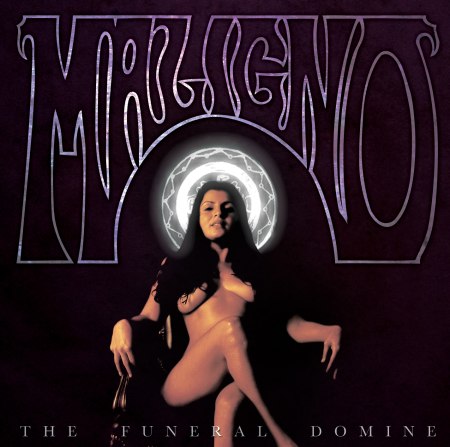
Having gained a not-to-be-sneezed-at fanbase in the USA, stoner metal band Maligno are very likely the most recognized Mexican band in the weed-friendly genre. In The Funeral Domine, their third studio offering, Maligno show a more relaxed sound than in their previous highly-bluesy albums which worked a more standard stoner/doom metal sound. The Funeral Domine exploits melodies without sacrificing a gram of heaviness in return. Unlike most of stoner metal bands, Maligno didn’t lean towards a psychedelic or 70s retro sound when trying to expand horizons. Instead, the band invested more in song-writing and guitar work, both being stunning in this record. And on this note, Mexican acoustic guitar wizards Rodrigo y Gabriela guest on the album adding an acoustic track among the predominant heavy riffs. A worthy representative of Mexican metal, highly recommended not only for stoner or doom metal fans, but also for anyone craving for good heavy guitar work.
.
MORTUARY – Blackened Images (1990)
Independent – Monterrey, Nuevo León

Veterans Mortuary can unfairly be seen as Transmetal’s evil twin. While both bands are known for crafting some of Mexico’s finest death/thrash metal albums, Mortuary’s debut record released in 1990 is already a typical example of the genre, whilst Transmetal would evolve from traditional thrash metal to a more death metallic sound in a matter of three albums. In Blackened Images, Mortuary delivers a faster brand of death/thrash. The tempo pairs that of USA bands Incubus and Epidemic with an ever-present high speed in both riffs and drums. Insane solos are also a tenacious element in the album. The sonic hostility heard in Blackened Images would have an important impact in the new-born death metal scene in Mexico. Mortuary would drop a second full-length in 1995 and would split up soon after. Sadly, although the band is currently active, singer and bassist Joel Alanis past away a couple of years back.
.
TRANSMETAL – El Infierno de Dante (1993)
Discos y Cintas Denver – Yurécuaro, Michoacán

This is arguably Mexico’s most popular metal album. Leaving aside the meme the album has turned into in these days, Transmetal’s El Infierno de Dante is actually a jaw-dropping album and very likely the clearest example of the Mexican metal’s apex in the early 90s. As aptly pointed out by the then-singer of the band, Alberto Pimentel, in his infamous rant-turned-meme, El Infierno de Dante was produced and mixed by no other than Scott Burns who also orchestrated recordings for Suffocation, Sepultura, Napalm Death, Death, Deicide, Cannibal Corpse and Obituary among many other giants. Also, it is true that, as Mr. Pimentel argued, the album featured Glen Belton from Deicide fame on the backing vocals. But even if you didn’t know these credits, just listening to the album is a very pleasant experience. Transmetal belong to the first generation of thrash metal bands in Mexico along with Next, Six Beer and Inquisidor. 1993’s El Infierno de Dante was actually Transmetal’s seventh LP, one can immediately hear an experienced band at their peak of creativity. The album is aggressive and powerful, yet showing great dynamism in the manipulation of tempos and song-writing. A version with lyrics in English was also made available at the same time. Alas, the band’s popularity never took off at an international level and El Infierno de Dante remains a rather underrated album in my opinion.
.
ULTRATUMBA – Museo de los Despojados (1998)
Discos y Cintas Denver – Mexico City
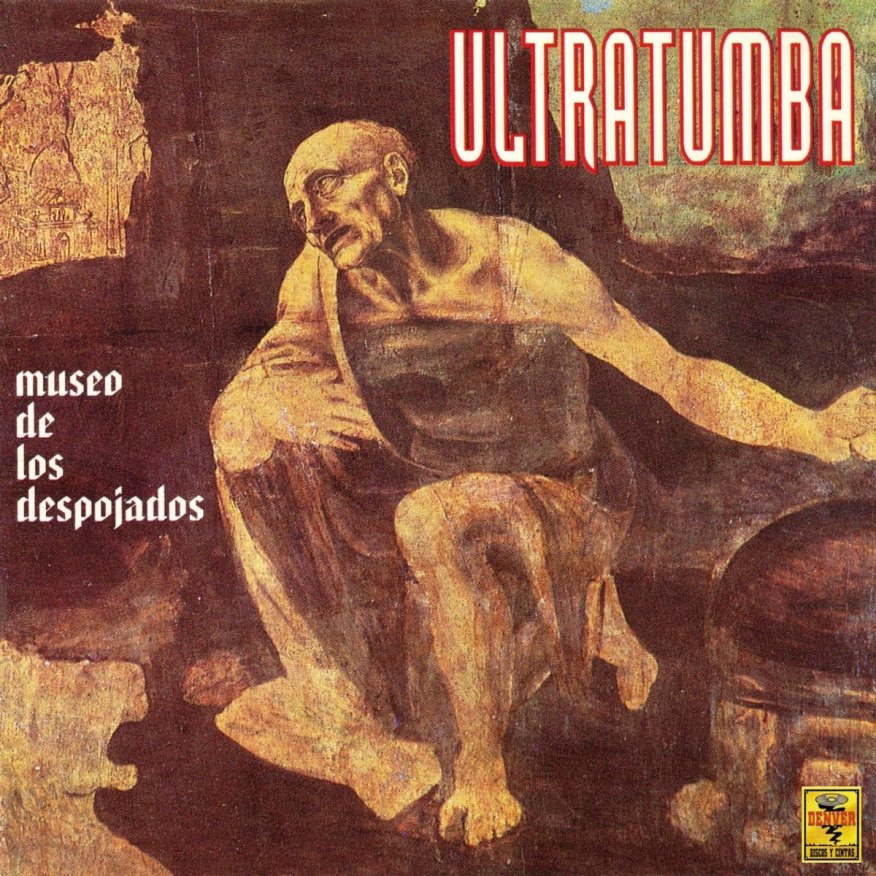
Started as a side project of Transmetal’s Lorenzo Partida, Ultratumba is commonly known as a death/doom metal band that adapted the groovy thrash metal riffs of Transmetal to a darker atmosphere which implies, of course, turning down the tempo. As a death/doom metal outfit, growls are intrinsic to the band. Nevertheless, in their sophomore release Museo de los Despojados, launched in 1998, Partida decided to bring in Arturo Huizar from heavy metal icons Luzbel, to take over the vocals of the album. Hence, Museo de los Despojados has all the heavy and groovy riffs of Ultratumba while featuring heavy metal vocals turning into an extremely appealing sound, maybe only compared to that of Solitude Aeternus, especially in the guitar work. Huizar is a remarkable vocalist, not only in terms of his vocal range but also in his whole performance, including his strong Christianity-taunting lyrics which he interprets in an almost theatrical way. Museo de los Despojados is a much potent album than the average traditional/epic doom metal releases, in terms of riffing. Alas, the Partida/Huizar collaboration died with this album never to be repeated again.
.
XIBALBA ITZAES – Ah Dzam Poop Ek (1994)
Guttural Records – Mexico City

What can be heard amid the sinister gloom of this album is utterly remarkable. Not only did Xibalba Itzaes record an excellent raw black metal album, they also offered a sound that can be considered ahead of its time in a couple of senses. First off, by 1994 there were only a handful of black metal bands in Mexico, with Xibalba Itzaes and Avzhia being probably the earliest notable examples in the country. And secondly, in Ah Dzam Poop Ek, Xibalba Itzaes incorporate indigenous instruments to create an occult pre-Hispanic atmosphere. This is really remarkable as by 1994 few to none of the game-changing folk metal albums that incorporated folk instruments had been released, I can only mention Skyclad’s early efforts off the top of my head. However, in a more folk/black metal context, all the well-known pioneers in the genre like Cruachan, Ulver and Enslaved were rather obscure names. Irrefutably, Xibalba Itzaes pioneered the surge of black metal bands of Mayan- and Aztec-themed lyrics which would normally incorporate ancient instruments, the most successful example being USA-relocated Yaotl Mictlan. The use of these atmospheric elements was, however, still pretty mild in Ah Dzam Poop Ek (maybe even sampled?). Xibalba Itzaes actually focus on a rather basic and raw brand of black metal clearly influenced by Burzum in his Det Som Engang Var (1993), not only in the menacing guitar tone, but also in the tempos play. Others like Judast Iscariot and Darkthrone (at their A Blaze in the Northern Sky (1992)) may come to mind while listening to this album. Quite an important release for the nowadays healthy black metal scene in the country. And, by the way, although the band’s original name was simply Xibalba, they should not be mistaken for the Californian hardcore band Xibalba which also features some Mexican members.
.
YAOTL MICTLAN – Guerreros de la Tierra de los Muertos (2006)
American Line – Mexico/USA
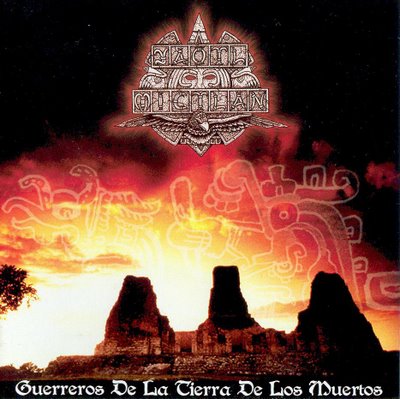
Although relocated to the USA shortly after its conception, Yaotl Mictlan make every list of Mexican metal artists in a more strict way than Brujería. Not only was the project first started in Mexican lands, their members, even in the band’s current line-up, are all Mexicans. Yaotl Mictlan, name meaning “Warriors from the land of the dead” in Nahuatl, take what Xibalba Itzaes did in the 90s to a different level. Taking aggressive and well-structured black metal, the band incorporates real indigenous instruments, obtaining a ritualistic occult sound. Guerreros de la Tierra de los Muertos, which is the Spanish translation of the band’s name, is their first full-length. The album was critically acclaimed as listening to it becomes an excellent exercise for folk/black metal followers because it shows pretty much the same idea of Viking, Celtic and Slavic bands but being taken to ancient civilizations of Mesoamerica. Typical folk/black metal features such as loathing and remorse to fiercely-imposed Christianity, a bold pride for the ancient cultures heritage, and pagan worship are displayed by Yaotl Mictlan. Notwithstanding the similarities in their principles, unlike many folk/black metal bands, no trace of racism or nationalism can be found in Yaotl Mictlan. Yet, through their lyrics in Spanish with phrases in Mayan and Nahuatl, the band may harshly criticise the Spanish for their dreadful ways in destroying the Aztec Empire. The album, in fact, depicts in many stages battles against the conquerors and their imposition of Christianity. Borrowing inspiration from this album, some other bands have applied the formula, in what has been coined as “pre-Hispanic metal”. The genre encompasses artists like Xulub Mitnal, Tzitzimitl, Cemican and Russian outfit Tenochtitlan, among others.
.
– PABLO CUSTODIO –
.



